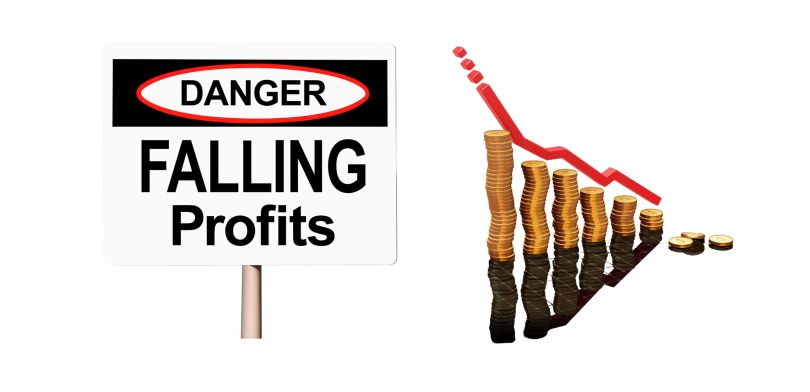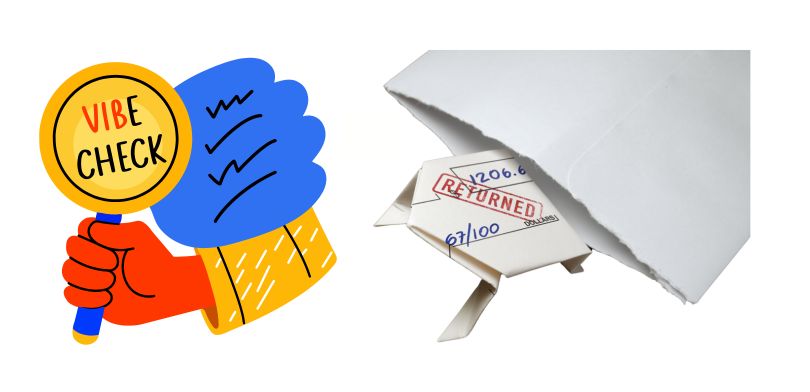If You Charged $100/hr in 2020 and Haven’t Raised Your Rates Since, You’re Actually Only Earning $83 Now

Are you Unintentionally Giving Yourself a Pay Cut Every Year?
If you’re self-employed in a service-based business, charged $100 an hour in 2020, and haven’t raised your prices since, you’re now effectively earning only $83 an hour for the same amount of effort.
If you bill 25 hours a week for 48 weeks of the year, your income has effectively dropped from $120,000 to just under $100,000.
That’s a $20,000 pay cut – that you didn’t agree to.
Dude. Your boss sucks.
How’d your pay get cut by 17% when you weren’t even looking?

Inflation. The average annual inflation rate between March 2020 and March 2025 was 3.7%. On that hundred bucks you were charging back in 2020, that’s nearly four bucks an hour for each year. That means in 2025 you should be charging $120 an hour just to cover inflation.
If you don’t really know what inflation means, it means the silent bloating of prices each year. Like that waistline that silently expands each year if you’re not paying attention, prices go up, and you get less and less for your dollar as the years go by.
What does that mean for your business?

In business terms, if you don’t raise your prices, it means your costs go up but your revenue stays the same. Which means your business profit, i.e. the money your business pays you as its owner after it’s covered its operating costs, goes down…and down…and down.
So if you haven’t raised your rates in a few years, your profit margin – how much of each dollar you earned from your magic hands that you actually kept – has quietly been chewed to bits — even if you’ve been working just as hard (or harder).
But wait… it gets worse
The official inflation rate is the average inflation rate for the economy, based on a ‘basket’ of certain items economists think are representative of the cost of living. It’s measured by the CPI – the Consumer Price Index. The inflation rate for your business may well be higher than the official rate. Things like rent, electricity, insurance etc often outpace CPI.
Also, your business’ costs might have risen beyond the level of inflation, not just because of cost-of-living pressures, but because of the buying decisions you’ve made for your business. If you’ve spent more on training, tech or equipment, that’s shrinking your profit margin too.
Do your accounting
This is why it’s important to do your accounting – so you know what your business’ profit margin is, and can adjust your prices accordingly.
If ‘doing your accounting’ doesn’t extend beyond sending hastily-compiled-at-tax-time figures to your accountant for them to lodge your tax return, and then rushing to the part of your business you’d rather be doing, you’re going to miss this whittling away of your profit margins, and probably end up wondering why you have so little money when you work so damn hard all year long.
If you’re basing your rates on what clients “can afford,” or on what “feels fair,” without doing the maths on your actual costs and inflation, you’re running your business on vibes.
“Vibes — like ‘exposure’ — don’t pay the bills.” Try paying the tax man, or your super fund, in vibes, and see how fast your cheque bounces.

So what can you do?
1. Check your pricing.
Make sure it’s at least keeping up with inflation. Run your 2020 rate through the RBA inflation calculator here. If it’s more than one quarter into the financial year, use the quarterly calculator to get the most up to date rate.
2. Look at your costs.
Are you charging enough to cover them now, not five years ago?
Remember, your costs aren’t just the money you spend — they also include the time you spend. Not just on the work you can charge for, but also the time it takes to do all of the ‘business’ stuff — cleaning, ordering supplies, quoting, marketing, IT, compliance, and of course, doing your accounting.
In a bigger business, time spent delivering the work would be paid out as staff wages (or service fees if the tasks are outsourced). If you’re doing all of these things in your sole trader business, that staff member or service provider is you. The time it takes you to do these things should be factored into your hourly rate using at least the national minimum wage – which is currently $24.10/hr and is expected to increase on 3rd June 2025.
⏱️ Track Your Time
If you have no idea how much time you spend on the ‘business stuff’, I recommend you get yourself the free Toggl Track app, and start tracking. I use it to track every minute of my day, and have been astonished by what I’ve learned from its reports about how I spend my time. It’s not only helping me to work out profit margins, it’s helping me be more aware of time-wasting activities (I’m lookin’ at you, YouTube!) and use my time better.
📊 Do Your Accounting
If you have no idea what your income, business costs and profit margins are, I can help. I’ll show you how to do your accounting – the smart way – in my online courses and programs designed specifically for sole traders who suck at the accounting stuff, so that you can find out! Because a real business owner knows their numbers. And I don’t mean how many coffees you can smash in a day, or how fast you can switch between 17 open browser tabs.
3. Make a plan.
If raising your rate freaks you out, raise it gradually — or add value in other ways — but start doing the maths and making intentional choices.

🛠️ A Few Ways to Raise Your Rates Without Freaking Out or Losing Clients
- Start with new clients only.
Keep your current pricing for existing clients (for now), and introduce your updated rates for all new quotes, bookings, or contracts. That way, you ease into it without overhauling everything overnight.
- Use a stepped increase.
Instead of one big leap, increase your rate, whether it’s per hour, per job, per service, or per package, a little at a time — say, every 3–6 months — until you're where you need to be. This way, no single jump feels massive — to you or them.
- Offer a “last chance” booking window.
Let people know your rate’s going up soon, and give them a chance to book in, sign up or request a quote at the old price until the deadline you’ve chosen. It fills your calendar and signals value.
- Create new service options.
Introduce a premium version of what you do — with added features, faster turnaround, extra TLC, or a done-for-you element — and price that at your new rate. Some people will go for the upgrade without blinking.
- Bundle it.
Instead of charging per item, session, or hour, offer packages. These can be prepaid bundles, service plans, or retainers. A well-structured bundle feels like a deal to your client and gives you more consistent income.
Session-based Example:
Your new rate is $125 per session.
You offer a bundle of 5 sessions for $600.
That’s $120 per session — still more than your old $100, but it feels like a deal to the client.
Hourly Rate Example:
Your new hourly rate for client work is $150.
You offer a 10-hour retainer/package for $1,400.
That’s $140/hr — more than your old $120, and still feels like a win to them.
- Use better language.
“My new rate will be…” sounds confident.
“I’m sorry to have to tell you this…” sounds apologetic.
You’re a business, not a charity, and you need to cover your costs and be paid a decent amount for your work. Own it.
- Practice saying it.
Literally rehearse in the mirror:
“From July 1st, my new rate will be $125 per session.”
“From July 1st, my new minimum project fee is $750.”
“New clients will be quoted at my updated hourly rate of $150.”
Say it until it doesn’t make your butthole tighten.

Final Thoughts
You’re out there making magic happen for your clients every damn day. Whether it’s with your hands, your tools, your brain, or your creative genius — your work matters. And you deserve to be paid fairly for it.
If you don’t update your pricing to keep up with inflation and the real cost of doing business, you’re effectively donating part of your time.
You’re not a charity. And you don’t get tax deductions for unpaid labour.
So please —
Know your worth.
Know your numbers.
And price your services like the pro you are.
About the Author

Anna Mitchell is an accountant — who was also a massage therapist for a few years, working for corporate wellness agencies on an ABN — and avoiding her accounting like massage clients avoid doing the stretches you recommended.
All that sticking her head in the sand got her was nine years behind on her tax returns. Nine. Years. If an accountant can mess up her accounting that bad, maybe you’re not such a loser after all.
After untangling that mess in 2019, she built herself a system to make sure it never happened again. That grew into That Accounting Stuff — online courses for Aussie sole traders who’d rather eat a book than do their books.
Now she helps people like you go from Accounting Zero to Accounting Hero — so you can ditch the tax-time panic, stop those nasty cashflow-destroying surprises, and finally feel like a ‘proper’ business owner who knows their numbers (and is way more likely to succeed).
